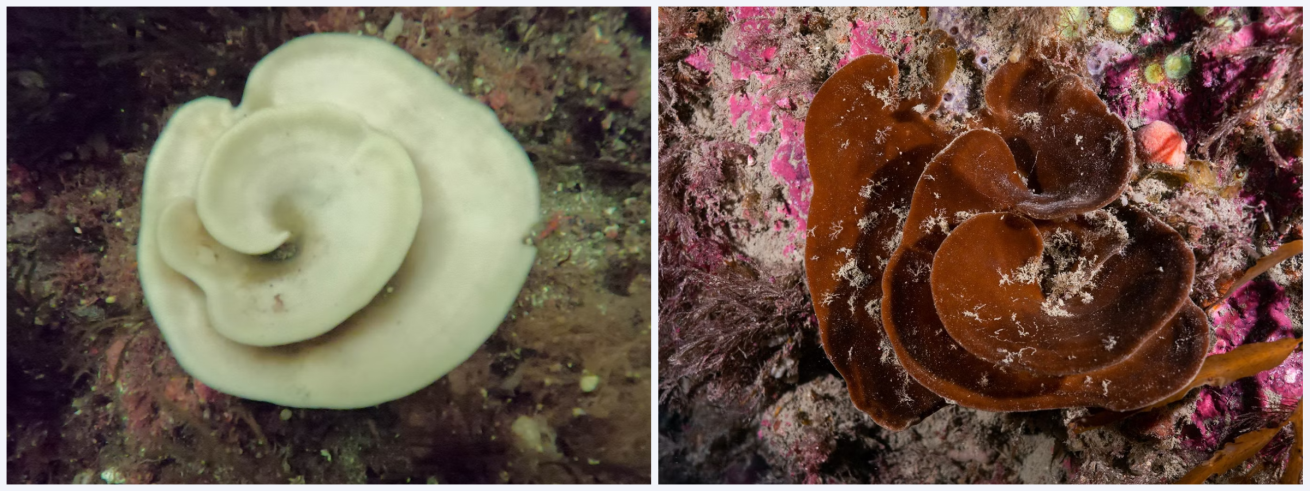New Zealand Sea Sponges Suffer Mass Bleaching For The First Time

Dr Valerio Micaroni / Francesca Strano / Victoria University of WellingtonLeft: A bleached sponge; Right: A healthy sponge
The mass bleaching of native sea sponges was spotted for the first time in New Zealand’s Breaksea Sound and Doubtful Sound fjords in Fiordland.
Such bleaching has never before been witnessed in New Zealand, and few reports exist of similar occurrences in cold waters internationally, James Bell, a Victoria University of Wellington marine biologist, tells the Independent.
“This could be the start of something really, really bad for other ecosystems,” he says.
Sponge gardens are the foundation of an important marine ecosystem in New Zealand. Dominating the local seafloor, sponges create critical habitats for fish and release carbon that other species feed off. Sponge die offs could imperil fish populations.
Similar phenomena occur on coral reefs, wherein bleaching often indicates stress and unfavorable conditions for survival. Sponges are usually more tolerant to oceanic changes than species like coral, which makes this mass-bleaching all the more notable.
“It’s a really unusual event,” Bell tells The Guardian.
Scientists suspect the bleaching developed quickly and may be widespread. Affected sponges were found at more than a dozen sites along the southern coastline. Initial estimates show hundreds of thousands of sponges having bleached – if not many more. In some areas, 95 percent of sponges lost their color.
Bell’s discovery followed an extreme marine heat wave in New Zealand’s South Island. April saw the highest ocean temperatures ever recorded in the area, RNZ reported.
University of Otago oceanographer and marine heatwave researcher Rob Smith reported local temperatures as much as five degrees warmer than average. “What we’ve seen this summer is the strongest marine heatwave on the west coast of the South Island in 40 years,” he says.
The bleached sponges could regain health and come back to life if the driving conditions are addressed, Bell tells The Guardian. "Unfortunately, some of them are a little bit manky and not very happy or healthy,” he says.
Further research is needed to definitively establish whether the extreme ocean temperatures caused the bleaching. At this stage, the researchers have observed a “very strong correlation” between the temperature spike and the mass bleaching, Bell says. “This just highlights the kind of climate crisis that we’re facing. There are so many species around New Zealand, and we don’t know what their thermal tolerances are.”










